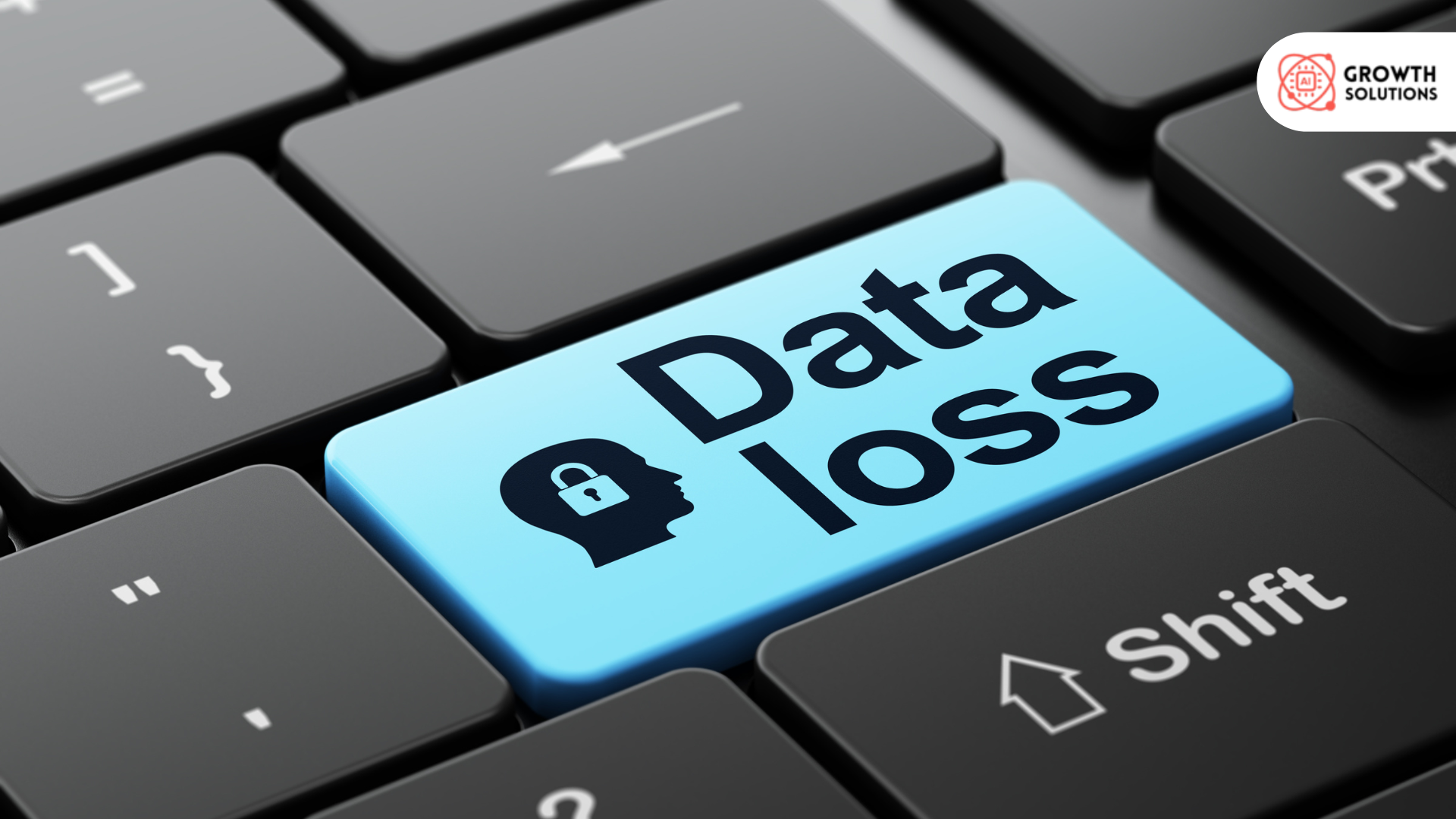18554493114
Call us for any question.
- support@aigrowth-solutions.com
- 349 Blue Point Rd Farmingville, NY 11738,USA
Call us for any question.
18554493114
Search for products
Blog Detail
- Home
- Blog
- Details
What are the Common Causes of Data Loss?
In today’s data-driven world, ensuring the safety and security of your data is paramount. Yet, data loss is a common issue that can happen to anyone at any time. At Ai Growth Solution, we understand the frustration and potential harm that data loss can cause. To help you better protect your valuable information, we’ve outlined the most common causes of data loss and how you can prevent them.
Human Error
Accidental Deletion: It's all too easy to mistakenly delete important files or entire folders. This often happens when cleaning up data or during routine operations.
Unintended Formatting: Formatting the wrong drive or partition can erase critical data in an instant. Always double-check before proceeding with any formatting actions.
Misplacement of Data Storage Devices: Losing or misplacing USB drives, external hard drives, or other storage devices can lead to data loss, especially if backups are not available.
Hardware Failures
Hard Drive Failures: Traditional hard drives are prone to mechanical failures, which can render data inaccessible. Regular backups and monitoring drive health can mitigate this risk.
Solid State Drive (SSD) Failures: While SSDs are more reliable than hard drives, they can still fail due to firmware issues or bad blocks.
Power Surges and Outages: Sudden power interruptions can damage hardware and corrupt data. Using surge protectors and UPS devices can provide a layer of protection.
Software Issues
Corrupted Files: Software bugs, crashes, or improper shutdowns can lead to file corruption. Regular updates and proper shutdown procedures can help prevent this.
Software Crashes: Applications can crash and corrupt data, especially if they fail during a write process. Keeping software up-to-date and using reliable programs can reduce this risk.
Incompatible Software Updates: Sometimes, updates can cause compatibility issues, leading to data loss. Always back up data before applying updates.
Cyberattacks
Malware and Ransomware: Malicious software can encrypt, delete, or steal data. Using robust antivirus programs and practicing safe browsing habits can reduce the risk.
Phishing Attacks: Phishing emails can trick users into revealing sensitive information or installing harmful software. Training and awareness are key defenses.
Data Breaches: Unauthorized access by hackers can result in significant data loss. Implementing strong security measures, such as firewalls and encryption, is crucial.
Natural Disasters
Floods: Water damage can destroy electronic devices and the data they contain. Storing backups offsite or in the cloud can safeguard against this.
Fires: Fire can irreversibly damage hardware. Fireproof safes and offsite backups can provide additional protection.
Earthquakes: Physical damage from earthquakes can lead to data loss. Secure your equipment and have a disaster recovery plan in place.
Theft
Physical Theft of Devices: Laptops, phones, and external drives are common targets for thieves. Encrypting data and using tracking software can help mitigate losses.
Unauthorized Access: Unauthorized personnel accessing sensitive data can lead to loss or theft. Implementing strict access controls and monitoring can prevent this.
Power Failures
Sudden Power Outages: Unexpected power cuts can corrupt files or damage hardware. Using uninterruptible power supplies (UPS) can help maintain power during outages.
Voltage Spikes: Surges in electrical power can damage components and lead to data loss. Surge protectors can offer a simple yet effective defense.
Network Failures
Server Crashes: When servers crash, data can be lost or corrupted. Regular maintenance and backups can minimize the impact of server failures.
Network Outages: Disruptions in network connectivity can result in data loss, especially if transactions are interrupted. Redundant network paths and robust failover strategies are essential.
Mismanagement of Data
Poor Data Handling Practices: Inadequate data management practices can lead to loss. Proper training and clear data handling procedures can prevent mishaps.
Lack of Regular Backups: Failing to back up data regularly increases the risk of loss. Implementing automated backup solutions ensures data is always protected.
Inefficient Data Storage Solutions: Using unreliable storage solutions can result in data loss. Investing in quality storage systems and regularly updating them is crucial.
Insider Threats
Malicious Intent by Employees: Disgruntled employees can intentionally delete or steal data. Monitoring and access controls can help prevent such incidents.
Negligence in Following Security Protocols: Employees who disregard security protocols can inadvertently cause data loss. Regular training and strict enforcement of policies are necessary.11. Environmental Factors
Extreme Temperatures: High or low temperatures can damage electronic components. Maintaining optimal environmental conditions in data storage areas is important.
Humidity: Excessive humidity can cause condensation and damage electronic circuits. Dehumidifiers and climate control systems can mitigate this risk.
Dust and Debris: Dust accumulation can lead to overheating and hardware failure. Regular cleaning and maintenance of equipment are essential.
Logical Errors
File System Corruption: Errors in the file system can make data inaccessible. Regular disk checks and repairs can prevent this.
Partition Table Issues: Problems with the partition table can result in data loss. Using reliable partition management tools and backing up data can help.
Metadata Corruption: Corruption of metadata can make files unreadable. Regular backups and file integrity checks are important preventive measures.
Conclusion
Understanding the common causes of data loss is the first step in protecting your valuable information. At Ai Growth Solution, we specialize in data recovery and can help you safeguard against these risks. Whether it’s implementing preventive measures or recovering lost data, our experts are here to assist you. Contact us today to learn more about our comprehensive data recovery services and how we can help you secure your digital assets.
Category
Data Recovery
Previous Post
What is Data Recovery and Why is it Important?
In today’s digital age, data is the backbone of both personal and professional lives. From che...
Next Post
How Does Data Recovery Differ for Various Storage Devices?
In today's digital age, data loss can be a catastrophic event for individuals and businesses ali...
Today's businesses span borders, requiring versatile solutions.



 Admin
Admin
